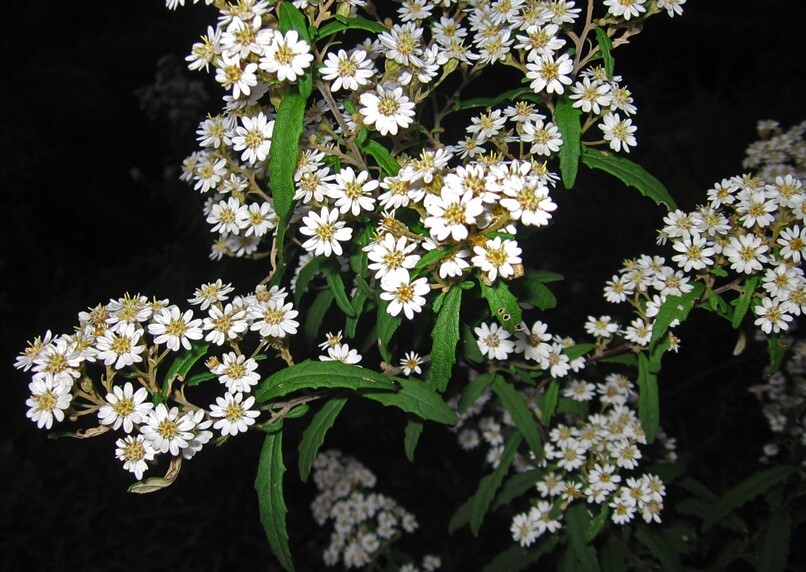Olearia stellulata
(Labill.) DC.Shrub to c. 2 m high; branchlets and leaf undersurfaces yellowish with dense, stellate hairs. Leaves alternate, petiolate, lanceolate or narrow-elliptic, 30–75 mm long; 6–18 mm wide; upper surface green, finally glabrous but slightly scabrous, usually stellate-pubescent when young; margin regularly serrate, typically with 5–10 teeth each side, cleft to one-third the distance toward the midrib. Capitula 15–25 mm diam., in terminal or subterminal panicles or corymbs; peduncles mostly 8–20 mm long; involucre c. hemispherical, 4–5 mm long; bracts c. 3-seriate, graduating, densely pubescent. Ray florets 8–15, white, ligules 6–10 mm long; disc florets 8–15, yellow or mauve. Cypsela narrow-obovoid, 6-ribbed, 1.5–2 mm long, shortly and sparsely pubescent; pappus bristles 3–4 mm long. Flowers Nov.–Jan.
GipP, OtP, WaP, CVU, WPro, HSF, HNF, OtR, HFE, VAlp. Also Tas. In Victoria apparently restricted to Chapple Vale area. Willis (1973) and subsequently Walsh & Lander (1999) reported this species as also occurring at Mt Clay near Portland. However, there are no vouchered records of this species from that location.
Close to O. rugosa and O. phlogopappa, but differing from the former in the less wrinkled and scabrid leaves, from the latter in the coarser indumentum, and from both in the regularly serrate leaves that are yellowish beneath. Plants from Wilsons Promontory previously treated in this species are now included in Olearia phlogopappa subsp. phlogopappa. These can be distinguished from Olearia stellulata by the relatively thick-textured leaves that are glabrous above, lacking tubercles, and are very dense stellate-tomentose below. See notes under O. phlogopappa subsp. phlogopappa.
Walsh, N.G.; Lander, N.S. (1999). Olearia. In: Walsh, N.G.; Entwisle, T.J., Flora of Victoria Vol. 4, Cornaceae to Asteraceae, pp. 886–912. Inkata Press, Melbourne.
 Spinning
Spinning